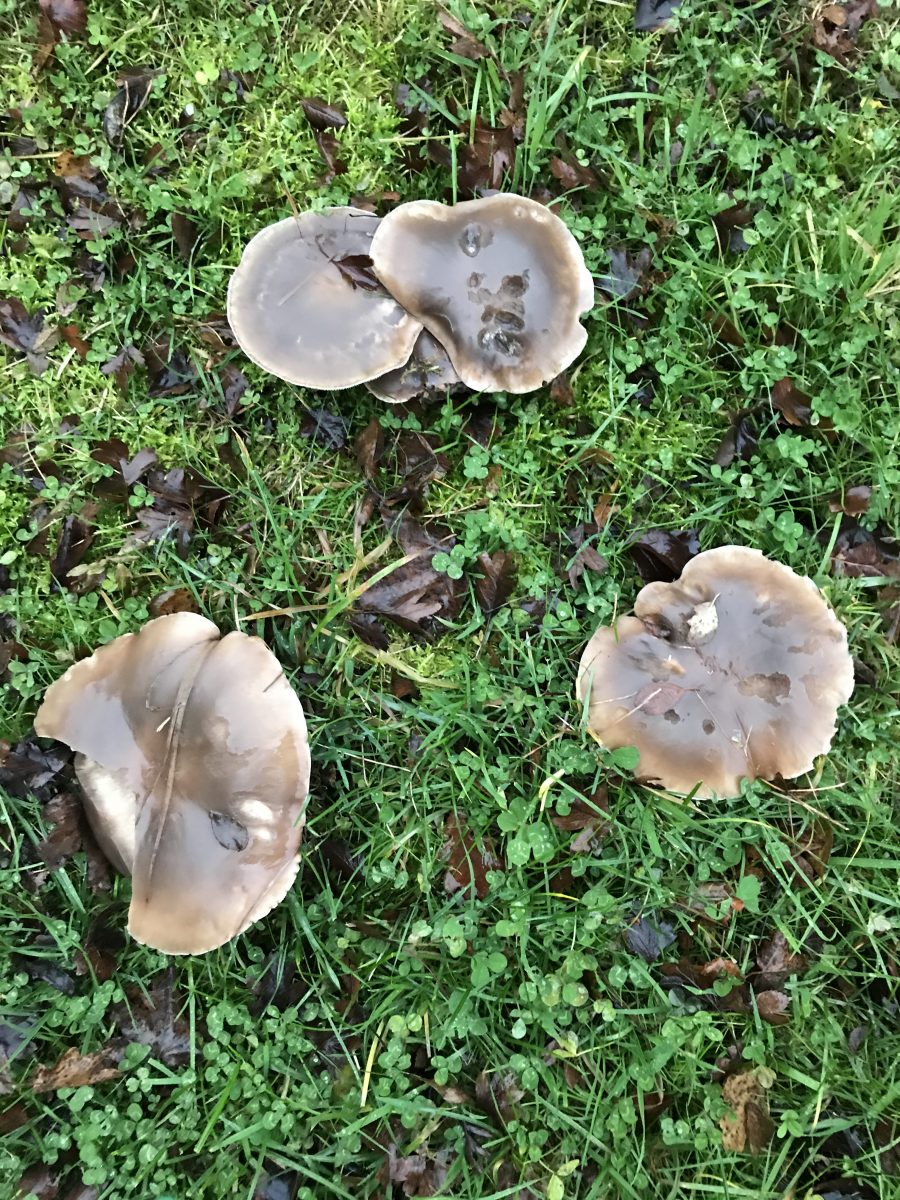Winter maintenance work continues in the wood by hard working volunteers, with strimming around the pond and other areas, tidying up around the paths and hedges, and general clearing up where necessary. All these jobs improve the access and quality of the wood, and to help those of us whose identification skills are a little rusty, a selection of Field Studies Council laminated cards have been purchased with money raised from the Spring Plant sale and are now available to read and study in the arbour by the pond.
You say mushroom I say toadstool!

The frosty nights and chilly days in the last couple of days in November reminded us that winter is on its way. However, the relatively mild but wet weather over the last few weeks have encouraged many large mushrooms to emerge along the pathways in the wood, and got me wondering about the difference between a mushroom and a toadstool. It seems that there’s no real scientifically accepted difference and the terms can sometimes be used interchangeably for the same types of fungus, although the word toadstool seems to have a more negative association which is probably associated with folklore. Many fungi looked the perfect size and shape for a toad to sit on and as many toads were thought to be poisonous, the ‘toad stool’ was also considered dangerous to eat! Probably not such a bad thing, as we have 14 species of poisonous fungi in the UK, so it’s very wise to leave them alone unless you know what they are as they can literally kill humans. You can often see where badgers and other animals have rooted around them and deer, rabbits, mice and squirrels as well as slugs and snails like tucking in to what is really the fruiting bodies of the fungus. Fungi can’t make its own food like plants by photosynthesis so produces enzymes which break down waste organic matter (like dead plants or animals) to be absorbed through fine threads, called the mycelium, and used for growth. We often can’t see the mycelium when it grows with roots of plants underground but it helps plants to improve their water and nutrient uptake and in return the plants provide fungi with sugars from photosynthesis.
What use are they?
Fungi also efficiently break down wood so are essential in our wood to help stop dead wood and leaves building up and then recycling nutrients back into the soil. There would be a significantly higher ground level amongst the trees in Jubilee Wood without them! With regards to other uses, not only are they used in medicines such as the well known penicillin, but also ‘anti-rejection’ drugs in organ transplants , and in many foods and drinks. Fizzy drinks, beer, wine, coffee and chocolate, as well as bread, cheese and [love it or hate it] Marmite, all depend on fungi. Not classified as either plants or animals, fungi belong to their very own group called a kingdom and have been around for millions of years, adapting to environments as different as the Arctic to the deserts and have even been found in space. Fungi are the heroes of recycling as we, as a species, wouldn’t be able to survive on this planet without them, so next time you walk around the wood and see the humble mushroom[or toadstool], just take a moment to think about how marvellous fungi are.

Useful Websites
https://www.woodlandtrust.org.uk/trees-woods-and-wildlife/fungi-and-lichens/
Just to add thanks to the Jubilee Wood maintenance gang and all who contribute to its upkeep.